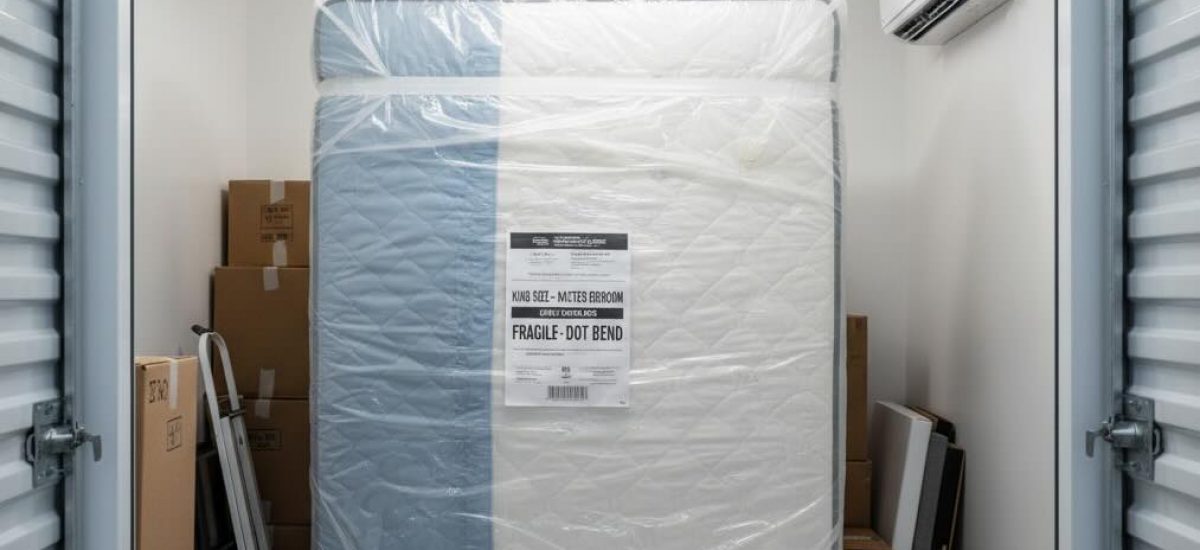Your mattress is a big investment, and store a mattress properly protects its comfort and longevity, whether you’re moving, renovating, or freeing up space. From cleaning to choosing the right storage option, a clear plan prevents damage like mold or warping. We connect you with FMCSA-registered movers to transport your mattress to secure storage facilities in 2025. This step-by-step guide walks you through how to store your mattress safely and effectively.
Call +1-334-659-1878 to plan your storage.
Why Proper Mattress Storage Matters
Mattresses are prone to mold, mildew, and structural damage if stored incorrectly. Humidity, dirt, or improper positioning can ruin foam, springs, or fabric, costing hundreds to replace. A queen-size mattress fits in a 5×10 or 10×10 storage unit, but preparation is key, per Extra Space Storage. Challenges include finding climate-controlled storage and avoiding pests. We connect you with movers to deliver your mattress to secure facilities.
long distance moves
as low as $1748
Long-distance moving all across the United States. Experienced and insured, residential and commercial.
4.9/5 AVERAGE RATING
Step 1: Clean Your Mattress Thoroughly
Start by cleaning your mattress to prevent dirt or odors from setting in during storage. Vacuum both sides with an upholstery attachment to remove dust and debris. Spot-clean stains with a mild detergent and water, avoiding soaking the material. Sprinkle baking soda to neutralize odors, let it sit for a few hours, then vacuum again. Ensure the mattress is completely dry to avoid mold, per Public Storage.
Wet mattresses can develop mildew in storage, ruining them. Allow 24 – 48 hours for drying in a well-ventilated area before proceeding.
Step 2: Protect with a Mattress Cover
Wrap your mattress in a breathable, heavy-duty cover to shield it from dust, moisture, and pests. Use a plastic mattress bag designed for storage, ensuring it’s sealed tightly but allows some air circulation to prevent trapped moisture. Avoid cheap plastic tarps, which can trap humidity and cause mold. For extra protection, add a layer of moving blankets secured with tape.
Check that the cover fits snugly, king-size mattresses need larger bags than twins. We connect you with movers who provide proper packing materials.
Step 3: Choose the Right Storage Option
Select a storage solution based on your mattress size, budget, and storage duration. Below is a comparison of key options:
| Storage Type | Cost (Per Month) | Features | Best For |
|---|---|---|---|
| Climate-Controlled Units | $80 – $250 | Humidity control, 24/7 surveillance | Long-term, sensitive mattresses |
| Standard Storage Units | $50 – $150 | Gated access, basic protection | Short-term, budget-conscious |
| Portable Storage Containers | $100 – $300 | Driveway packing, secure storage | Flexible, temporary moves |
Climate-controlled units are best for foam or hybrid mattresses, preventing humidity damage. Standard units work for short-term storage in dry climates, while portable containers offer flexibility for moves. We connect you with movers to transport your mattress to the right facility.
Step 4: Store Your Mattress Properly
Position your mattress correctly to avoid warping or damage. Lay it flat on a clean, elevated surface like pallets to prevent moisture buildup from the floor. Avoid stacking heavy items on top, as this can deform springs or foam. If space is tight, store the mattress upright, supported by a wall or sturdy items, but check monthly to ensure it’s not bending.
Ensure the storage unit has good ventilation and no leaks. We connect you with movers who handle proper placement in secure facilities.
Step 5: Monitor and Maintain During Storage
Check your mattress every 1 – 2 months to ensure the cover is intact and no moisture or pests have entered. Rotate it if stored upright to prevent sagging. In climate-controlled units, maintain a temperature of 50 – 80°F and humidity below 65%. If you notice odors or damage, address them immediately to avoid permanent issues.
Facility restrictions, like limited access hours, can complicate checks. We connect you with movers who deliver to accessible storage facilities.
long distance moves
as low as $1748
Long-distance moving all across the United States. Experienced and insured, residential and commercial.
4.9/5 AVERAGE RATING
Frequently Asked Questions About Storing a Mattress
What size storage unit do I need for a mattress?
A 5×10 unit fits a twin or full mattress; a 10×10 suits queen or king sizes.
Is climate control necessary for mattress storage?
Climate-controlled units ($80 – $250/month) prevent mold and damage, especially for foam mattresses.
Can I store a mattress in a portable container?
PODS containers ($100 – $300/month) work for temporary storage but need climate control for long-term use.
How do I prevent mold during mattress storage?
Use a breathable cover, ensure the mattress is dry, and choose climate-controlled storage.
What items can’t be stored with a mattress?
Flammables, perishables, and hazardous materials are prohibited in storage units.
Conclusion: Store Your Mattress with Confidence
Storing your mattress properly protects your investment from mold, pests, and damage. Follow these steps, clean, cover, choose the right storage, position correctly, and monitor regularly, to keep it in top condition. We connect you with FMCSA-registered movers for secure storage solutions. Verify our credentials at fmcsa.dot.gov and call +1-334-659-1878 for a free quote today.








